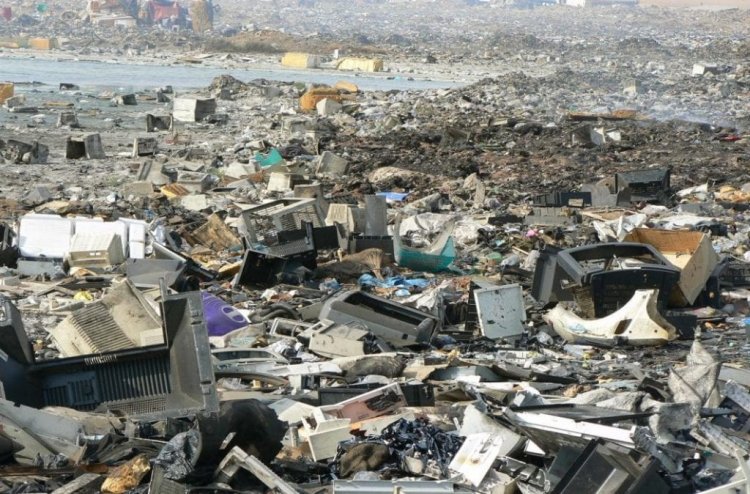The Increasing Amount of Electronic Waste: Health Concerns and Controlling E-Waste Pollution

Electronics have influenced all aspect of daily life in our digital age, promoting ease, connectivity, and innovation. But as technology has advanced quickly, electronic garbage (e-waste) has increased in combination, creating serious problems for the environment and human health. When improperly handled, e-waste—which includes abandoned electronic items like laptops, televisions, and cellphones—contains dangerous chemicals that can harm the environment and jeopardize human health.
We'll examine the expanding issue of e-waste pollution in this blog, along with its health hazards and possible ways to control and lessen its effects on the environment and people.
The Problem of E-Waste: Its Scope
E-waste is now one of the waste streams that is rising the quickest worldwide, driven by shorter product lifespans and greater use of electronic gadgets. Global E-waste Statistics Partnership estimates that just 17.4% of the 53.6 million metric tons of e-waste produced globally in 2019 was recycled. When e-waste is disposed of or recycled improperly, it can contaminate the environment, land and water, and have negative health consequences on the local population.
Health Hazards Linked to E-Waste:
Lead, mercury, cadmium, brominated flame retardants, and polyvinyl chloride (PVC) are just a few of the dangerous materials found in e-waste that can seep into the environment and seriously endanger both people and animals. By inhalation, ingesting, or coming into touch with skin, these poisons can cause respiratory problems, neurological problems, reproductive problems, developmental delays, and even cancer. Particularly at danger are vulnerable groups include youngsters, expectant mothers, and unofficial e-waste recyclers.
Managing E-Waste Pollution: Solutions
Governments, industry, consumers, and the recycling industry must work together to solve the e-waste problem. These are some approaches to control pollution from e-waste:
- Extended Producer Responsibility (EPR): Manufacturers must bear end-of-life management of their products under EPR regulations, which governments can enact. EPR promotes manufacturers to create programs for collecting and recycling e-waste and to design their goods for durability, repairability, and recyclability.
- Recycling and Correct Disposal: Avoiding electronic device landfills and lessening environmental damage need encouraging e-waste recycling and correct disposal methods. E-waste recycling schemes provided by merchants, governments, and electronic manufacturers allow customers to guarantee proper disposal of their outdated equipment.
- Knowledge and Education: Promoting sustainable consumption patterns and behavior modification need raising knowledge of the negative effects of e-waste pollution on the environment and health. Campaigns for education can educate customers on the value of recycling, fixing, and disposing of electronic devices properly.
- Circular Economy Initiatives: By encouraging product reusing, refurbishing, and remanufacturing, adopting the circular economy concepts can reduce the production of e-waste. Businesses that want to lessen their environmental impact might adopt circular business models that give resource efficiency, product lifetime, and material recovery top priority.
- Innovation & Green Technology: The environmental and health effects of e-waste can be lessened by funding research and innovation to create more sustainable, environmentally friendly electronic devices and production methods. The electronics sector can see good change from the use of energy-efficient design techniques to environmentally friendly materials.
CONCLUSION
Although there are unquestionable advantages to society from the spread of electronic gadgets, there are also serious environmental and health effects from the expanding e-waste issue. Every stakeholder—governments, manufacturers, consumers, and the recycling sector—must work together to combat e-waste contamination. We can lessen the effects of e-waste pollution and advance a more sustainable future for coming generations by putting into practice laws and programs that encourage responsible consumption, recycling, and sustainable product design.
What's Your Reaction?


















